Table of Contents
Are you aiming for rounder, firmer, and stronger glutes? If so, then hip thrusts should definitely be a staple in your workout regimen. When it comes to toning and sculpting the glutes, they can outshine squats, deadlifts, or lunges in certain respects. However, mastering the proper technique is key to reaping their benefits and steering clear of common mistakes. We’ll delve into all of this in today’s article.
While at the gym, you’ve probably observed both men and women seated on the floor with their backs against a bench, a barbell loaded at hip level, getting ready for the hip thrust, which has emerged as the go-to exercise for glutes in recent years. This surge in popularity is largely credited to trainer Bret Contreras, known as The Glute Guy, who is arguably the world’s foremost authority on glute training. He highlights the uniqueness of the hip thrust in its ability to achieve full hip extension, resulting in a significant shortening of the glute muscle fibres. This intense activation and strengthening make the hip thrust one of the most effective exercises for sculpting round and strong glutes. [1]
What Is a Hip Thrust?
There’s no magic pill for growing your glutes, which is why there’s the hip thrust. It’s an exercise where you lean your upper back against a bench, low box, or other elevated platform, with your feet planted on the ground and knees bent. You start in a seated position on the floor and then, by contracting your glutes, lift your pelvis upward until your hips reach full extension. In the top position, your torso is parallel to the ground. It’s this position that allows for maximum engagement of the gluteal muscles.
What is the difference between the glute bridge and the hip thrust?
Many people confuse the hip thrust with the glute bridge. Both are excellent for working the glutes, but there are differences between them. While during the hip thrust, your upper body is elevated, during the glute bridge, you exercise with your back on a mat. They also differ in that the glute bridge is more commonly used as an activation exercise with just body weight, while the hip thrust is more popular with added resistance. You can combine them in your workout routine. [4]
If you’re interested in learning how to properly do the glute bridge and its most effective variations, you’ll find everything in the article: Glute Bridge: Top 10 Variations for a Firmer and Rounder Butt
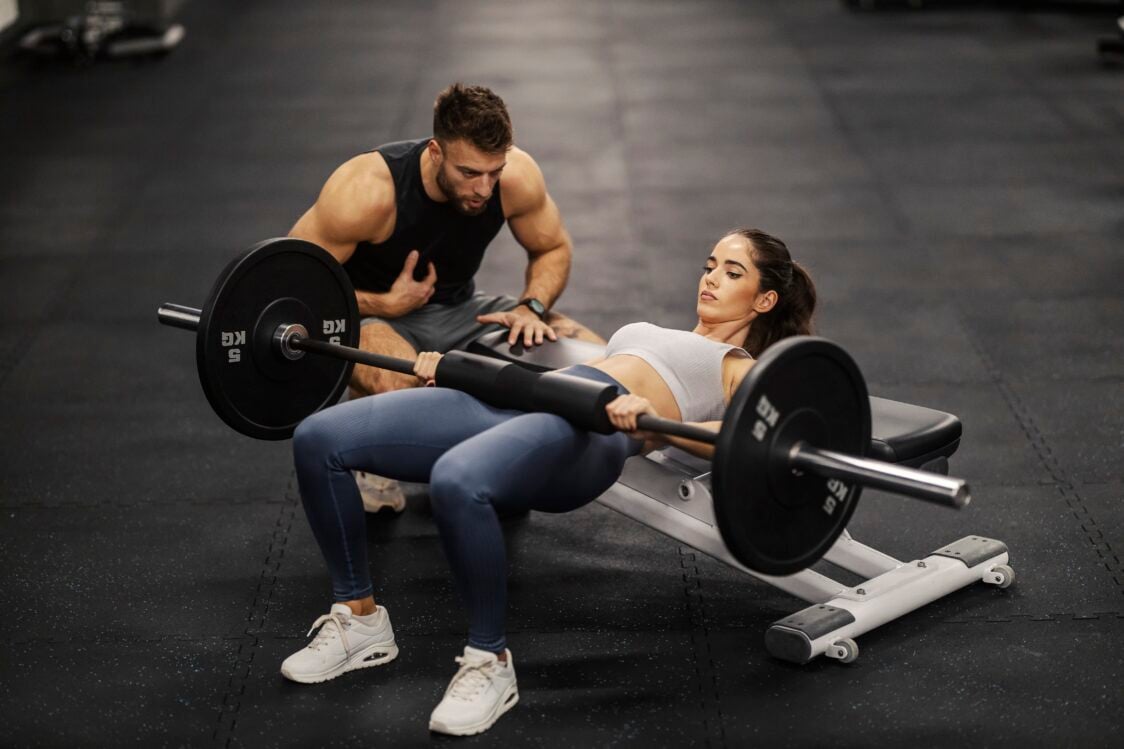
2. Single Leg Hip Thrust
- Starting Position: Sit on the ground with your upper back against a bench, keeping your head in line with your spine. Bend your arms at the elbows and rest them on the bench, placing your hands on your hips. Bring your heels close to your hips and position them next to each other. Keep one foot flat on the ground while lifting the other a few centimetres above the floor.
- Execution: Activate your core. Exhale and, by engaging your gluteal muscles, lift your pelvis and simultaneously lift your bent leg. At the top position, when your torso is parallel to the ground, perform a 1 to 2 second hold while actively contracting your glutes. Then, lower your pelvis down in a controlled manner and immediately continue with another repetition using the same leg. After completing the set, switch legs.
- Common Mistakes: Arching the lower back in the top position, bending the neck, uncontrolled movement, improper foot positioning, limited range of motion.

Another variation of the exercise:
1. Kettlebell Single Leg Hip Thrust
You can make this exercise more challenging by adding weight in the form of a kettlebell. Place it on your hips on the side of the supporting leg and hold onto the handle with both hands. Then, perform the exercise as you would with the bodyweight variation.
3. Barbell Hip Thrust
- Starting Position: Sit on the ground with your upper back against a bench, keeping your head in line with your spine. Place a barbell, either empty or loaded, on your hips. Bring your feet towards your hips and let them rest flat on the ground, either fully or just your heels. Spread them approximately shoulder-width apart and angle your knees slightly outwards.
- Execution: Activate your core. Exhale and engage your glutes to lift your hips with the barbell up in a controlled manner until your torso is parallel to the ground. Focus on contracting your glutes at the top position for a second or two. Then, lower your hips down in a controlled manner. Follow up with the next repetition.
- Common Mistakes: Arching the lower back in the top position, bending the neck, uncontrolled movement, improper foot positioning, limited range of motion, inappropriate weight selection.
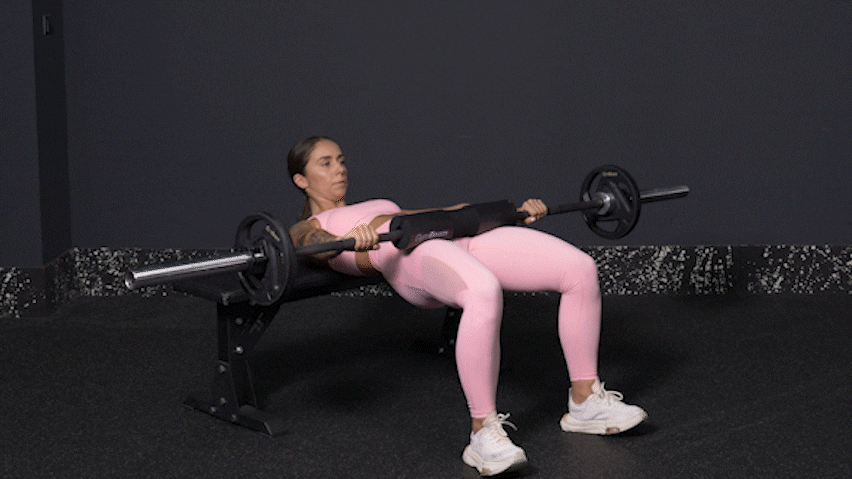
4. Kettlebell Hip Thrust
- Starting Position: Sit on the ground with your upper back against a bench, keeping your head in line with your spine. Place a kettlebell approximately in the centre between your pelvic bones. Bring your feet towards your hips and rest them flat on the ground or just the heels. Position your feet about shoulder-width apart and point your knees slightly outwards.
- Execution: Activate your core. Exhale and use your gluteal muscles to lift your hips with the kettlebell in a controlled manner until your torso is parallel to the ground. In the top position, focus on contracting your glutes. Hold for a second or two, then slowly lower your hips back down in a controlled manner. Follow up with the next repetition.
- Common Mistakes: Arching the lower back in the top position, bending the neck, uncontrolled movement, improper foot positioning, limited range of motion, inappropriate weight selection.
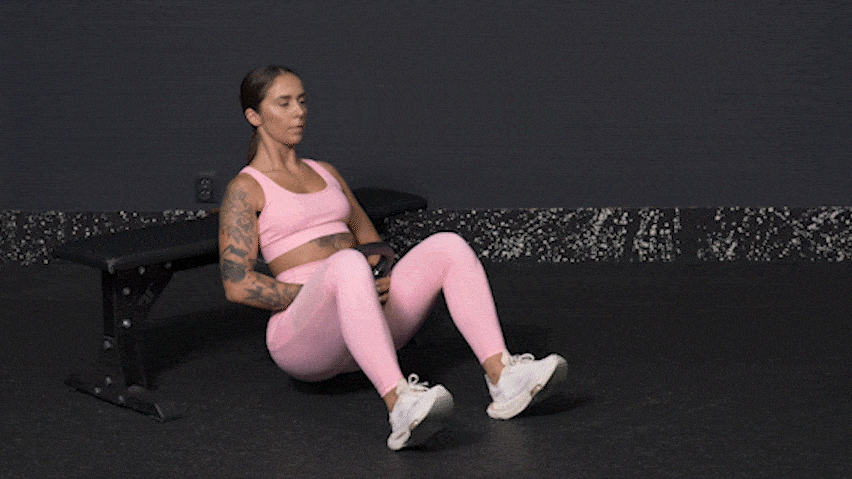
5. Dumbbell Hip Thrust
- Starting Position: Sit on the ground with your upper back against a bench, keeping your head in line with your spine. Place a dumbbell on your hip and grip it with both hands from the sides. Bring your feet towards your hips and place them flat on the ground, either fully or just your heels. Spread them approximately shoulder-width apart and angle your knees slightly outwards.
- Execution: Activate your core. Exhale and use your gluteal muscles to lift your hips with the dumbbell in a controlled manner until your torso is parallel to the ground. In the top position, focus on contracting your gluteal muscles. Hold for a second or two, then lower your hips down in a controlled manner. Follow up with the next repetition.
- Common Mistakes: Arching the lower back in the top position, bending the neck, uncontrolled movement, improper foot positioning, limited range of motion, inappropriate weight selection.
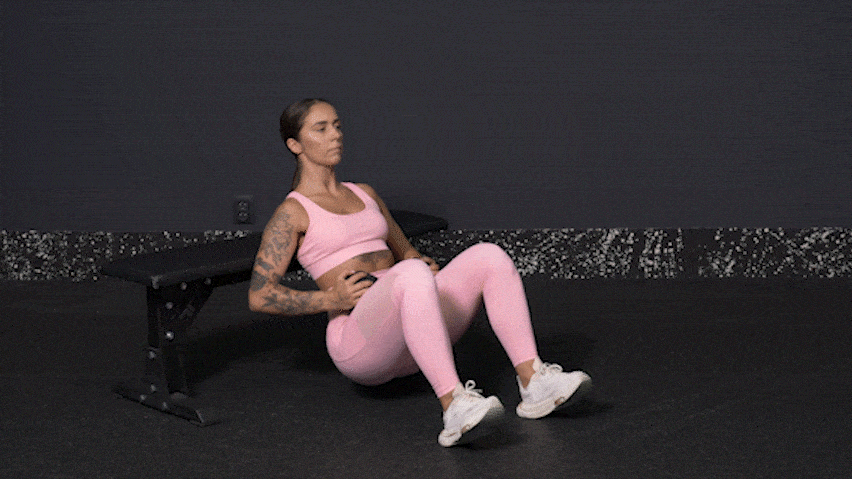
6. Resistance Band Hip Thrust
- Starting Position: Sit on the ground with your upper back against a bench and keep your head aligned with your spine. Then place a loop band above your knees. Bring your feet towards your hips and let them rest flat on the ground, either fully or just your heels. Spread them approximately shoulder-width apart and angle your knees slightly outwards.
- Execution: Activate your core. Exhale and use your gluteal muscles to lift your hips with the dumbbell in a controlled manner until your torso is parallel to the ground. In the top position, focus on contracting your gluteal muscles. Hold for a second or two, then lower your hips down in a controlled manner. Follow up with the next repetition.
- Common Mistakes: Arching the lower back in the top position, bending the neck, uncontrolled movement, improper foot positioning, limited range of motion, inappropriate weight selection.
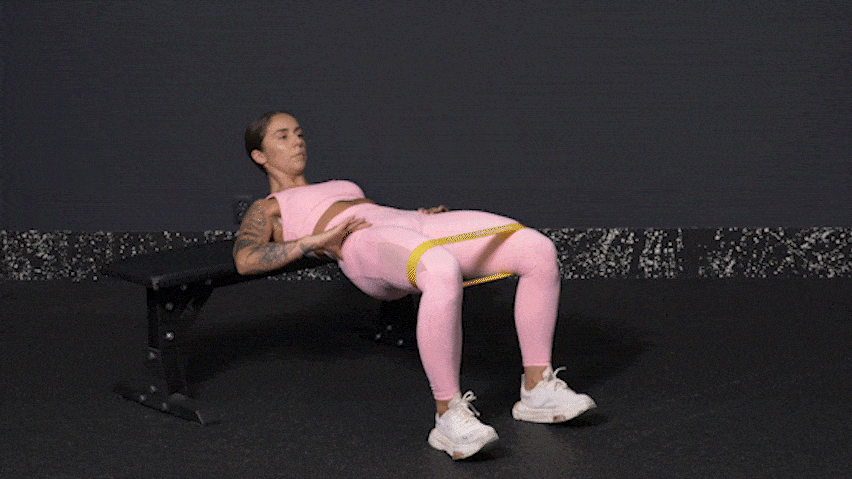
Where to Go From Here?
What Are the Main Takeaways?
The hip thrust is an effective exercise for strengthening the gluteal muscles and developing a rounded butt. In addition to enhancing aesthetic curves, it can contribute to improved performance in sprinting and everyday movement. This exercise can therefore benefit strength athletes as well as soccer players, basketball players, or sprinters.
First and foremost, it is crucial to master the proper technique and then gradually increase the weight load to maximize benefits. Incorporate heavy hip thrusts into your training routine 1 to 2 times per week. However, when you are using just your bodyweight, you can include this exercise more frequently, even before every lower body workout as an activation exercise. Make sure to always prioritize adequate recovery and complement your results with quality nutrition.
Did you find this article helpful? If so, share it with your friends and pass on tips for variations of the hip thrust exercise.
[1] Williams, I. Why You Need To Do More Barbell Hip Thrusts. – https://mensfitnesstoday.com/features/barbell-hip-thrust-benefits/
[2] Contreras, B. How to Hip Thrust. – https://bretcontreras.com/how-to-hip-thrust/
[3] Contreras, B. 10 Steps to the Perfect Hip Thrust. – https://bretcontreras.com/10-steps-to-the-perfect-hip-thrust/
[4] PureGym. How to do Hip Thrusts. – https://www.puregym.com/exercises/glutes/hip-thrusts/
[5] Glutes hypertrophy: Hip thrust or parallel squat? – https://www.sci-sport.com/en/articles/Glutes-hypertrophy-Hip-thrust-or-parallel-squat-239.php
[6] Neto, W. K., Vieira, T. L., & Gama, E. F. Barbell Hip Thrust, Muscular Activation and Performance: A Systematic Review. – https://www.ncbi.nlm.nih.gov/pmc/articles/PMC6544005/
[7] Lanza, M. B., Arbuco, B., Ryan, A. S., Shipper, A. G., Gray, V. L., & Addison, O. Systematic Review of the Importance of Hip Muscle Strength, Activation, and Structure in Balance and Mobility Tasks. – https://doi.org/10.1016/j.apmr.2021.12.008
[8] Hardingham, C. How to hip thrust correctly. – https://injuryactive.com/how-to-hip-thrust-correctly/






Leave a Reply
You must be logged in to post a comment.